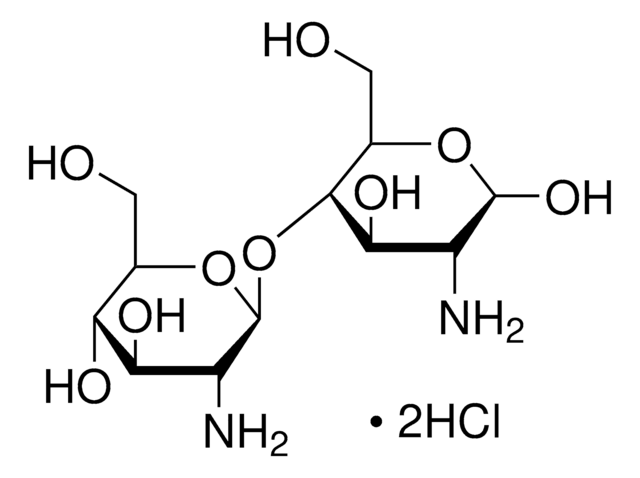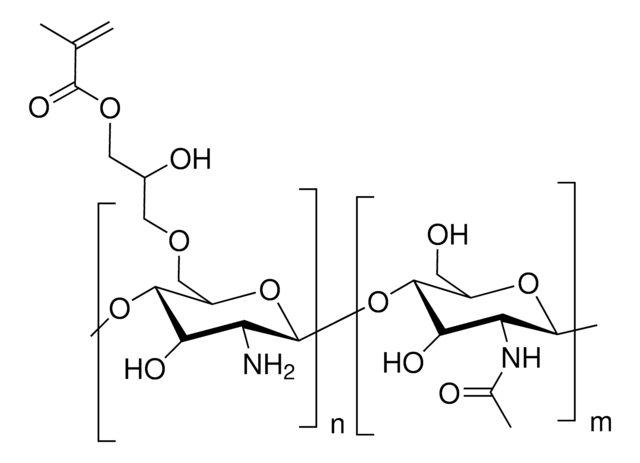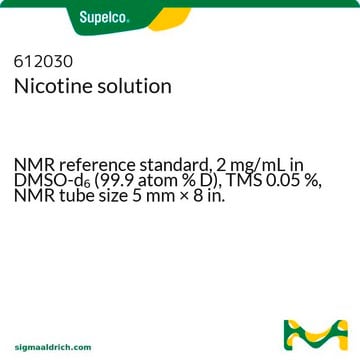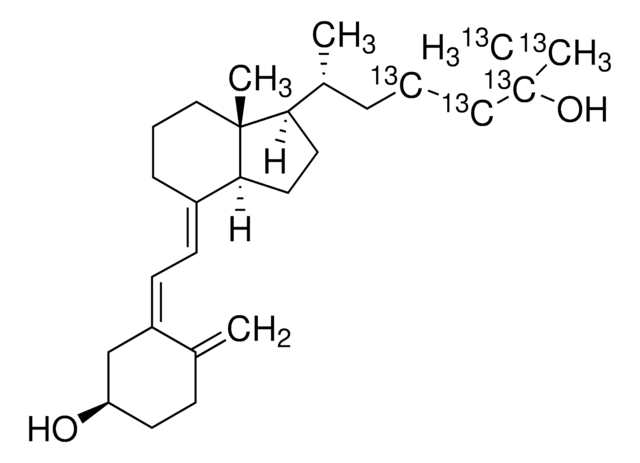Kluczowe dokumenty
740063
Chitosan
Mv 60,000-120,000
Synonim(y):
KiOmedine-CsU® B, Deacetylated chitin, Poly(D-glucosamine)
About This Item
Polecane produkty
pochodzenie biologiczne
white mushroom
masa cząsteczkowa
Mv 60,000-120,000
skład
Bacterial endotoxins, ≤10 EU/g
Beta-glucan, ≤5 % (w/w)
Chitosan, ≥93 % (w/w)
Proteins, ≤1 % (w/w)
lepkość
5-200 mPa.s (1% solution in 1% HAc)
rozpuszczalność
acetic acid: 1% (solution)
temp. przechowywania
2-8°C
InChI
1S/C56H103N9O39/c1-87-56(86)65-28-38(84)46(19(10-74)96-55(28)104-45-18(9-73)95-49(27(64)37(45)83)97-39-12(3-67)88-47(85)20(57)31(39)77)103-54-26(63)36(82)44(17(8-72)94-54)102-53-25(62)35(81)43(16(7-71)93-53)101-52-24(61)34(80)42(15(6-70)92-52)100-51-23(60)33(79)41(14(5-69)91-51)99-50-22(59)32(78)40(13(4-68)90-50)98-48-21(58)30(76)29(75)11(2-66)89-48/h11-55,66-85H,2-10,57-64H2,1H3,(H,65,86)/t11-,12-,13-,14-,15-,16-,17-,18-,19-,20-,21-,22-,23-,24-,25-,26-,27-,28-,29-,30-,31-,32-,33-,34-,35-,36-,37-,38-,39-,40-,41-,42-,43-,44-,45-,46-,47-,48+,49+,50+,51+,52+,53+,54+,55+/m1/s1
Klucz InChI
FLASNYPZGWUPSU-SICDJOISSA-N
Szukasz podobnych produktów? Odwiedź Przewodnik dotyczący porównywania produktów
Opis ogólny
The crystalline structure is in the α-form. The linkage between glucosamine units is β-(1,4).
Zastosowanie
Cechy i korzyści
Właściwości fizyczne
Informacje prawne
Kod klasy składowania
11 - Combustible Solids
Klasa zagrożenia wodnego (WGK)
nwg
Temperatura zapłonu (°F)
Not applicable
Temperatura zapłonu (°C)
Not applicable
Wybierz jedną z najnowszych wersji:
Masz już ten produkt?
Dokumenty związane z niedawno zakupionymi produktami zostały zamieszczone w Bibliotece dokumentów.
Nasz zespół naukowców ma doświadczenie we wszystkich obszarach badań, w tym w naukach przyrodniczych, materiałoznawstwie, syntezie chemicznej, chromatografii, analityce i wielu innych dziedzinach.
Skontaktuj się z zespołem ds. pomocy technicznej







